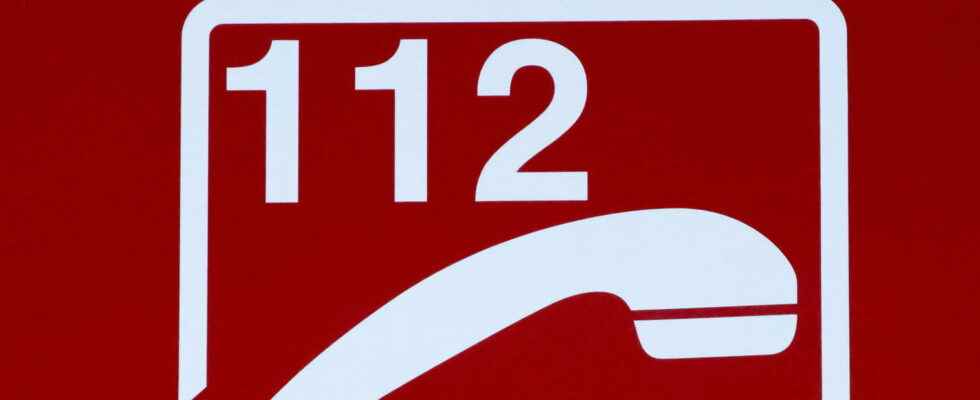This winter, any power cuts would disrupt the telephone network and make it difficult to get in touch with the emergency services. The government is working on solutions to ensure the link with emergency services.
A “last resort” solution, electrical load shedding can be used this winter if the voltages on the network are too high. Power cuts, although anticipated and limited to two hours, will have many consequences including “interruptions of electronic communications” on the mobile and fixed telephone network. The circular drafted by the government and sent to the prefectures on December 1 specifies the measure reported by European 1. Telephone lines do not have priority in the event of a cut and will therefore not be exempt from power cuts, problem: telephone calls are the preferred means of the French to contact emergency services in the event of an emergency. In offloaded areas, “users will not be able to reach the emergency services (15, 17, 18, 115, 196)”, writes the official document which refers to 112, the European emergency call number.
112, the only emergency number available?
A power outage, even programmed, causes the telephone network antennas to be put out of service. “It is illusory to imagine that in the event of load shedding, we will be able to maintain a continuous service for all French people”, admitted the general manager. d’Orange, Christel Heydemann, before the Senate Economic Affairs Committee on 30 November. Without an antenna, the usual emergency numbers are not available, only 112 can function thanks to its signal accessible to all operators and therefore to larger geographical areas. The special status of 112, as a European number, may allow the emergency number to “be less disturbed” by interruptions on the telephone network. However, calling 112 is not a miracle solution because “if [les services mobiles] are turned off in a geographic area for two hours, there will be no access to emergency number services for a time,” recalled Christel Heydeman.
If 112 remains usable to reach the emergency services, users must still be able to make calls, which is not guaranteed as indicated in the circular. “Mobile telephony and the internet will not work in areas without electricity. […] Only the copper lines, with a functional T-shaped telephone socket, will be operational”, specifies the government.
Is 112 enough to take all calls?
The government’s plan for possible power outages provides that the human resources available in the emergency call centers responsible for centralizing and handling all calls will be reinforced during but also two hours before and two hours after the cuts. , note European 1. This reinforcement is also required in the gendarmerie brigades and police stations. A tenfold increase in forces designed to be able to meet greater demand. Faced with the situation, awareness-raising communications to encourage the French to use 112 only in the event of real emergencies could be organized. For simple information on the power cut or other, hotlines in town halls are provided for by the government plan.
Does the 112 emergency number work everywhere?
Another problem arises with the use of 112. Although the emergency number is the only one that can be limited by all antennas, there are still white areas where the number does not work. The public authorities have asked to map all these areas in order to be able to remedy them and make 112 available and reachable everywhere by January.
The use of the number 112 could also be complicated by a saturation of the unloaded telephone line, but stormed by all the call attempts. In urban areas, calls to 112 could be allowed thanks to a signal, less efficient but possible, emitted by the nearest antenna and spared by the power cut, but if the signal is used by all, communication will be considerably slowed down . The situation could be more critical in rural areas because of a more widely spaced although usually sufficient network.
What other solutions to contact the emergency services during a power outage?
If the telephone network risks being disrupted in the event of power cuts, there are “backup systems that allow you to take over”, warned the director of Orange. However, it is impossible to provide all the antennas with batteries or backup generators. Some antennas are already equipped with backup batteries, but only capable of a “10 to 30 minute autonomy” and “designed to manage micro-cuts”, these fallback solutions will not be enough to compensate for two hours of power cuts according to Michel Combot, Director General of the French Federation of Telecoms (FFTélécoms), questioned by the Parisian on December 1. As for the generators, it is unthinkable to transport these machines of more than one ton to various places and “in a very short time”, continues the director general of the FFTélécoms.
The government’s plan also includes measures in areas where 112 does not work. Which must also be mapped to define “palliative measures and security reinforcement”, in particular the physical deployment of emergency services on the ground to ensure interventions if necessary. Finally, if contact with the emergency services is not possible either by telephone or physically, crisis cells set up in town halls or other defined places must be in “capacity to relay the alert to the services assistance, health and safety, for the duration of load shedding and any interruption of the telephone network.
Who can be affected by interruptions on the telephone network?
If load shedding and power cuts are responsible for interruptions on the telephone network, logic dictates that the cuts should be confined to the same geographical area. But it is not so simple and Michel Combot, the general manager of FFTélécoms, fears “cuts suffered in leopard spot mode rather than targeted on territories”.
